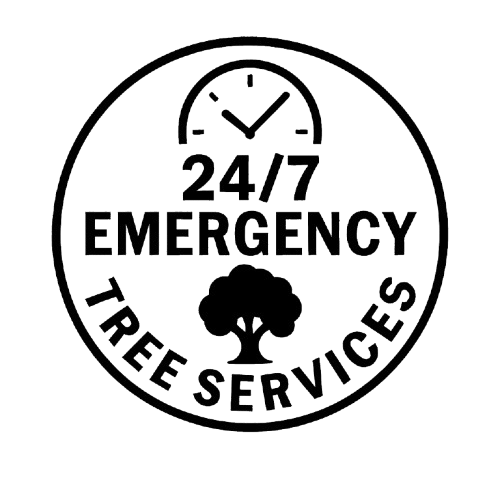How to Report Tree Damage After a Storm
In New York City, storms can leave a path of devastation, including downed or damaged trees that present serious safety risks. Reporting tree damage following a storm is a civic duty essential to maintaining public safety and returning to normalcy. The city has a streamlined process for reporting such damage, which helps prioritize and address dangerous situations quickly. Knowing how to report tree damage properly can expedite the response, making your neighborhood safer. Key Takeaways: Clear Steps for Reporting Tree Damage: New Yorkers can easily report damaged or fallen trees after a storm by contacting NYC 311. The service allows reports via phone, website, or mobile app. Being prepared with detailed information, such as the tree’s location and the extent of damage, can help speed up the response process. Public vs. Private Tree Responsibilities: It’s important to distinguish between trees on public property and private property. The city is responsible for maintaining and removing trees on sidewalks, streets, and parks, while homeowners are responsible for trees on their property. Reporting trees is the city’s responsibility, ensuring proper and prompt removal. Safety First: In cases where tree damage creates an immediate hazard, such as blocking roads or threatening power lines, it is essential to call 911 rather than waiting for a 311 report to be processed. Immediate action can prevent accidents and further damage, making it crucial to recognize emergencies. Understanding the Importance of Reporting Tree Damage Potential Hazards of Fallen Trees (Public Safety, Property Damage) Fallen trees after a storm can create several hazards. They can fall on vehicles, homes, or utility lines, leading to significant property damage and, in extreme cases, even bodily harm. Because these trees could block vital access roads, emergency personnel might need help getting to affected locations. Additionally, weakened branches left hanging after a storm pose a continuous risk as they could fall at any moment. Reporting such hazards is essential to prevent injuries or further damage. How Tree Damage Can Block Roadways, Sidewalks, and Utilities Fallen or damaged trees often block roads, sidewalks, and essential utility services like power lines. Blocked roadways make it difficult for vehicles, especially emergency responders, to move freely. Similarly, pedestrians, particularly older people or those with mobility challenges, face safety risks if sidewalks are obstructed. Trees that fall on power lines or water mains can also lead to outages, causing disruption to city services and risking public safety. Swift reporting helps ensure these vital pathways and services are restored promptly. Importance of Timely Reporting for Cleanup Efforts Timely reporting is critical in post-storm recovery. The city typically responds to storm damage in order of severity, with the most dangerous situations addressed first. When residents report fallen trees immediately, it helps city workers prioritize urgent cases such as those posing threats to public safety. A delayed report can result in slower cleanup efforts, leaving communities at risk for longer. Swift reporting ensures that city resources can be allocated efficiently and your neighborhood remains safe. Who Is Responsible for Tree Damage Cleanup? City Responsibility for Trees on Public Property (Parks, Sidewalks) In New York City, the Department of Parks and Recreation manages trees on public property, such as sidewalks, streets, and parks. The city is responsible for maintaining and removing these trees in the event of storm damage. Trees and huge branches that fall onto city property should be notified to the city by calling 311; the relevant agencies will remove the tree or branch. Homeowner Responsibility for Private Property Trees Homeowners, however, are responsible for any trees on their private property. This includes handling both routine maintenance and cleanup after storm damage. If a tree from private property falls onto the homeowner’s land or nearby public areas, the homeowner must take action to remove it. Homeowners are advised to work with licensed arborists or tree removal services for this task, as improper removal can be dangerous and may result in fines. Importance of Knowing the Jurisdiction (Public vs. Private Trees) Knowing the distinction between public and private trees is crucial when reporting storm damage. If a fallen tree is on public property, it should be reported to 311 for the city to handle. However, if the damage is on private property, it is up to the homeowner to arrange for removal. Misreporting could delay the cleanup process or lead to misunderstandings about who is responsible. Understanding this division ensures that the proper authorities are contacted and that action is taken swiftly. Steps to Report Tree Damage in NYC Step 1: Assess the Situation and Identify if the Tree Is on Public or Private Property The first and most important step in reporting tree damage after a storm is determining whether the tree is on public or private property. Public property includes streets, sidewalks, parks, and other city-maintained spaces. Private property consists of residential lawns, backyards, or trees within the boundaries of private homes. If the tree is located on public property, it becomes the city’s responsibility to address it. If it’s on private property, homeowners must take action. By identifying whether the tree is on public or private land, you can ensure the correct entity is contacted for removal, preventing delays in addressing the damage. Step 2: Contact NYC 311 via Phone, Website, or Mobile App Once you’ve confirmed the tree is on public property, the next step is to report the damage to NYC 311. You can do this by calling the 311 hotlines, visiting the official website, or using the 311 mobile app, which makes it easy to submit reports in real-time. The app and website are always open and include extra features, including the ability to attach photos. Regardless of your chosen method, the NYC 311 system can handle these reports efficiently, log your concerns, and forward them to the appropriate city department. Step 3: Provide Detailed Information (Location, Extent of Damage, Possible Hazards) Providing as much detail as possible when reporting tree damage is essential to help city workers respond efficiently. Important details include: Exact




